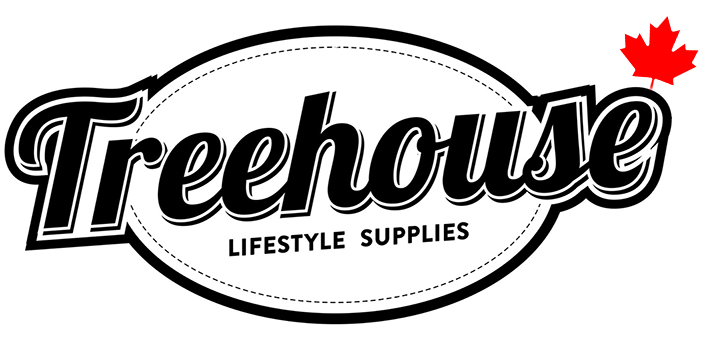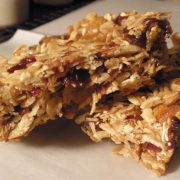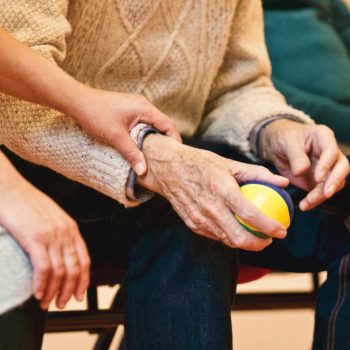Weed in the CFL? It’s always been ‘socially acceptable’, players say
In a sport notorious for the bone-crushing toll it takes on its players, it should come as no surprise that a significant percentage of members of the Canadian Football League – which does not test for marijuana – have used it regularly for years.
Some say they use it to help manage discomfort and limit their use of painkillers. Others say they like to unwind with it, some choosing it as an alternative to alcohol.
Of the five major pro sports leagues operating in Canada, the CFL is arguably the most openly discussing cannabis.
Few first-hand stories have been told on the record about the culture of cannabis use in this uniquely Canadian league over the years. But in the wake of legalization in Canada, more current and former players are willing to open up and share a glimpse of why and how they use it. Unlike in the National Football League, the CFL’s drug policy focuses only on performance-enhancing drugs and includes no testing for recreational drugs.
“I’ve never run into any football player who said he tried it and it didn’t help him, whether it’s with his inflammation or dealing with the symptoms that come with concussions,” Toronto Argonauts wide receiver Duron Carter says.
While recovering from a serious knee injury recently, Montreal Alouettes linebacker Nicolas Boulay says he found that drinking alcohol socially inflamed the injury and made him feel worse. The sixth-year CFL player began reading up on cannabis and athlete experiences with the drug.
“I still wanted to go out with my friends and have fun, so cannabis was an alternative I turned to instead of alcohol, and there was no hangover the next morning,” said Boulay, a 29-year-old who hails from Magog, Que. “Players I know who use it see many benefits mentally, physically and emotionally. I’m very explosive in everyday life and it helps to calm me down. But there’s a time and a place to use it. We keep in mind that we represent an organization and kids look up to us and we have to remember that when we’re in public.”
His Alouettes teammate John Bowman is happy to chat on the topic too. A 36-year-old veteran linebacker from New York who has played in the CFL since 2006, he chuckles at reports that imply nearly every CFL player uses cannabis, because he doesn’t use it and plenty of others don’t either. But he says it doesn’t bother him that many do.
“It has always been socially acceptable in our league to use it,” Bowman says.
Carter, the Argonauts wide receiver, says it’s widely used in both the CFL and NFL. The 27-year-old wideout from Fort Lauderdale, Fla., admits that in his younger days, he did it simply because, “It was just fun to smoke weed.” But in recent years he’s also found it helps him limit his use of painkillers, many of which warn of side effects or the risk of addiction. He recalls playing through a high ankle sprain last season by popping the anti-inflammatory drug Toradol before games – something many football players do – to dull the pain.
“But after the game, my body would feel terrible,” says Carter, has also played for Montreal and the Saskatchewan Roughriders. “And using marijuana would make me feel comfortable again.”
Carter also uses pain creams made with cannabidiol – or CBD – the compound in cannabis with no psychoactive ingredients. He says CBD creams are wildly popular among CFL players and they apply them liberally to soothe pain in their feet, backs, knees and shoulders. Other CBD products, such as candies and lollipops, are also popular with many players, he says.
In the lead-up to legalization in Canada, the CFL released the following statement to a handful of inquiring reporters, pertaining to players using cannabis:
“We expect all of our employees, those working in our business offices as well as those who compete on the field, to act responsibly and in compliance with the law. That obviously includes not coming to work impaired from any substance. We have faith our employees will display that sort of common sense.”
Matt Black, an Argonauts’ player rep with the CFL Players’ Association, describes the general rule of thumb from the coaching staff on his team: “If coaches see it or smell it, it’s an issue. They don’t tell you how to live your life, but when you come to practices, games or meetings they expect you to perform, and if there’s something inhibiting you, you’re not going to be here very long.”
On the topic of traveling with it, Carter has learned that’s complicated and perhaps not worth the risk, especially if going to or from the United States. He was charged in recent years at airports in Winnipeg and Saskatoon for marijuana possession.
“I’m so glad we’re finally having this conversation, because cannabis can help people,” Carter says. “You don’t want to be doing something illegal all the time. We deal with it when we go back home to the States. So it’s nice to be up in Canada; it’s a relief. It’s been very accepted on every CFL team I’ve played on. I mean, it’s one of the things some American guys come here for, that the CFL doesn’t test for marijuana.”
Recently retired Canadian defensive end Ricky Foley says some U.S players consider it “a drawing card” to play in Canada.
Foley spent time in NFL training camps much earlier in his career – with the Seattle Seahawks and New York Jets. In the NFL, marijuana remains on the banned substance list and players are tested for once per season. Those who pass are not tested again until the next year. Foley said he knew of groups of NFL players who celebrated passing their tests by going straight out to smoke up.
“It’s the icing on the cake for a lot of American guys, even though they might not admit it,” says Foley, who played for Saskatchewan, BC and Toronto over a 12-year career that closed out in 2017. “Many of them are like ‘I can come up here play football and smoke pot? Hell, yeah. I’m plotting my audition to go back to the NFL and I get to smoke while I’m doing it? Yeah, sign me up.’”
Smoking cannabis didn’t appeal to Foley – he didn’t like the idea of smoke in his lungs and thought early in his career that cannabis would make him feel lazy or groggy, and he’d be perceived as a stoner or a loser. But the three-time Grey Cup champ decided to try cannabis edibles late in his career, as he worried about all the prescription painkillers he’d ingested over the years to counteract the hurt on his body from sacking quarterbacks and tangling with hulking offensive linemen.
Occasionally, when particularly sore, Foley would eat a cannabis-infused brownie or cookie before bed time. He says it helped him manage pain, get a better sleep, recover quicker and alleviate anxiety he experienced late in his playing days.
“The best athletes are doing it, because it’s all about recovery. It makes too much sense not to look at it from an athletic performance sense,” Foley says. “I used to think it would be a negative for my performance instead of a positive. I was way late to that party, medicinally. If I’d known then what I know now, I’d have been doing that earlier.”
Retired Canadian linebacker Shea Emry remembers how it felt to smoke the occasional joint at the end of a long day during his eight-year CFL career with Montreal, Toronto and Saskatchewan. It helped alleviate the stress and aggressive feelings that followed the relentless linebacker off the field after a game.
Emry sustained more than 15 concussions during his playing days and struggled with depression. He says turning to cannabis eventually helped him cut out hard alcohol – which he’d previously enjoyed to excess – and avoid hangovers.
“I was super stressed about playing and thinking about what I’d do with my life after I retired, and cannabis helped with that stress,” said Emry, who played in the CFL from 2008 to 2015. “When I watch football now with my partner, I say to her, ‘That was me, that was the role I played, understand these animals running around hitting each other? That’s still within me, that’s who I’ve been and how I’ve acted.’ Cannabis is part of how I manage that.”
Black hopes to see more research done on possible benefits of cannabis for athletes managing constant pain.
“Some days the pain is so bad, you don’t know how you’ll get through it physically,” says Black, a Canadian defensive back. “Some days, a guy needs to sit in the hot tub for an hour before practice just so he can straighten his legs out. Sometimes you wake up unable to walk down the stairs with swollen knees. If you take pain medication long enough, one day you could be doubled over in agony because you’ve got an ulcer in your stomach. I think for athletes and long-term health, we need to see the research on marijuana and really look at it. An 18-game season is a long time to be on painkillers.”
In efforts independent of the league, the CFL Alumni Association has created an expert advisory board on the topic of medical cannabis to provide recommendations to its membership of some 2,000 retired players. The board is chaired by former Nova Scotia premier Darrell Dexter and includes legal and medical experts along with retired players.
The CFLAA is also currently collaborating with MedReleaf – a leading Canadian licensed producer of cannabis – on an observational study with more than 40 of its former players on the benefits of medical cannabis in managing chronic pain.
The CFLPA is eager to see the results of the CFLAA’s study.
“If it is a suitable alternative, it’s important that players get the information to learn about the research being done,” said Brian Ramsay, a retired Canadian offensive lineman who now serves as CFLPA’s executive director. “Of course, we want to give our members the most current resources and tools to be educated. We need to be open to something that could possibly benefit our players on the health and wellness side.”
A quick look at how cannabis is treated in the other major North American sports leagues:
NFL
Players are tested once from April to August, and prospects also get tested at the predraft combine. Players test positive if found to have 35 nanograms of extracted THC per milliliter of urine and must enter an intervention program. Second and third violations earn fines, a fourth gets a four-game suspension.
NBA
Players are subject to four random drug screens during the season. The allowable threshold is 15 nanograms a millilitre. One infraction lands a player in a substance-abuse program and penalties increase with more failed tests from fines to a five-game ban, then 10 games.
MLB
The league has a threshold of 50 ng/ml, but tests players only if MLB or union officials have reasonable cause. Players do not face penalties, however minor leaguers do, from a warning for a first infraction to a 50-game suspension for a second.
NHL
Marijuana is not classified as a banned substance and players are not punished for using it. Only players found with “dangerously high levels” of cannabis are sent to the league’s substance abuse program. The league tests players for performance-enhancing substances, but selects a random third of players to also test for illicit substances like cannabis. The results are merely used to compile a statistical snapshot.
MLS
Cannabis is a banned substance in Major League Soccer’s collective bargaining agreement and players are tested for it.
(via theglobeandmail.com)









